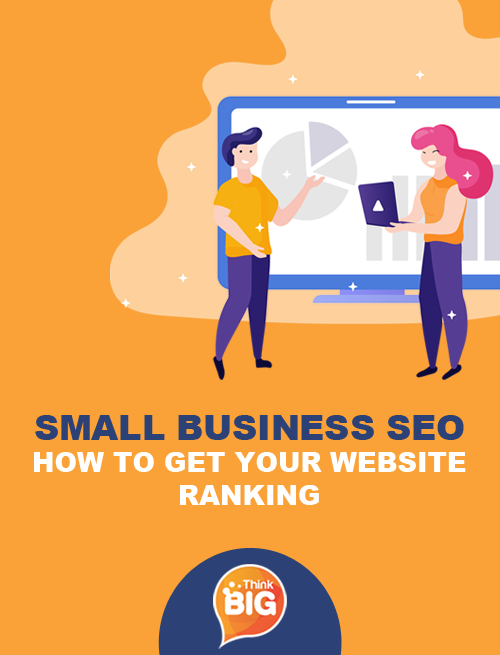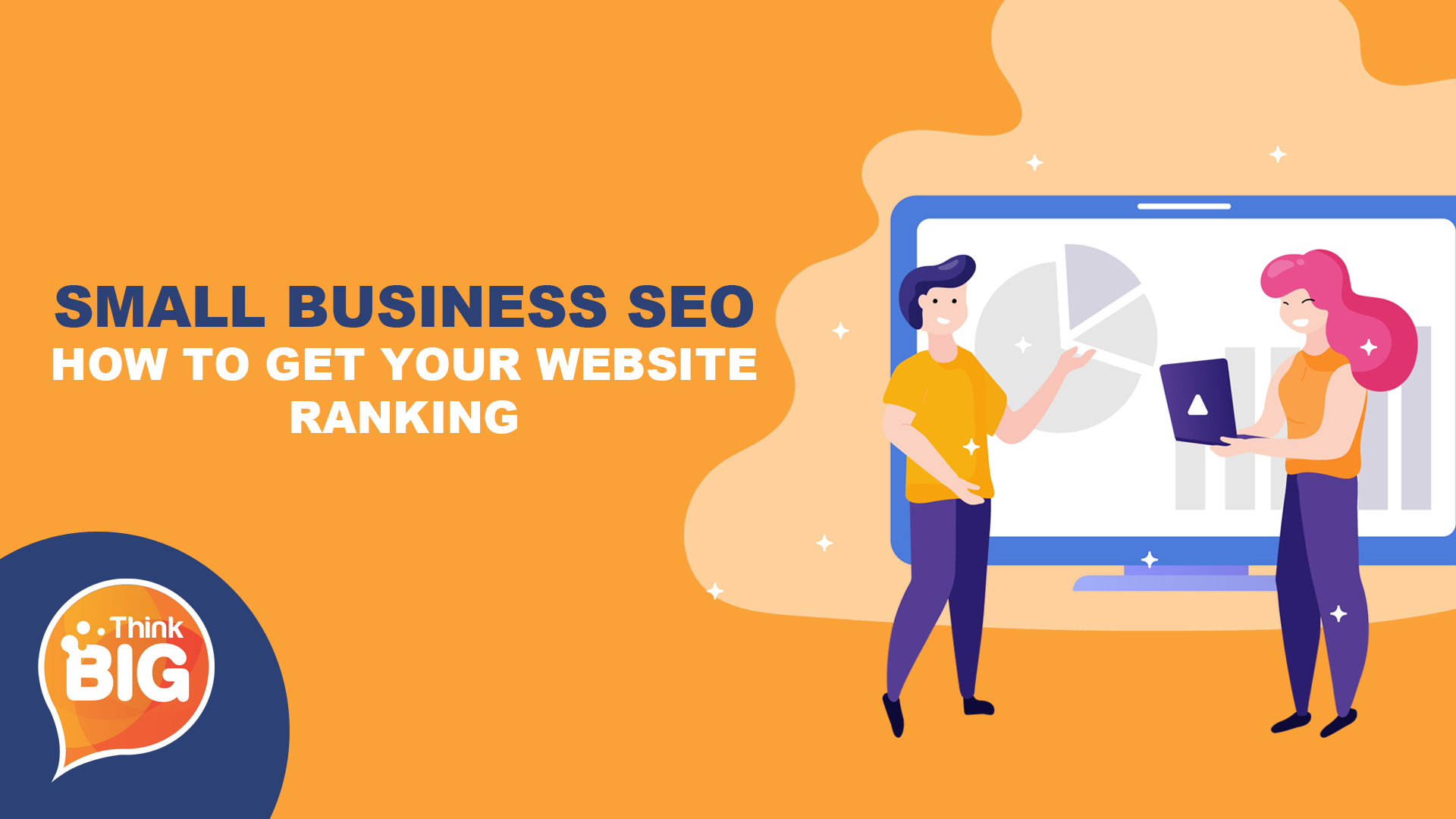Small Business SEO – How to Get Your Website Ranking




SEO isn’t for large business only. If you’re running a small business, there’s plenty you can do to improve your rankings on search engines and attract traffic to your site.
Our small business SEO guide will help achieve this by deploying simple tactics such as optimizing your site’s pages for local results or using social networks.
However, before you begin developing your small business SEO strategy, you need to optimize your website for search engines.
SEO for Small Business Websites – Optimizing Your Website
Define Your Niche/Keywords
Every small business SEO strategy begins with defining your niche. Knowing your niche will help you highlight the unique features of your brand and services, which is crucial for improving your rankings.
What’s more important, knowing your niche will facilitate the process of defining your target audience, as well as the words or phrases when searching for your products and services online.
Once you know these keywords, you can use them as a starting point for a vaster keyword research. This research should result in a larger number of specific, long-tail keywords you’ll be ranking for.
Think about which words or phrases online users would type into the search box, then use a keyword research tool to help you find related terms and phrases:
Next, check how competitive these phrases are. High competition indicates that you’re ‘fighting’ big players in your industry and significantly decreases your prospects of ranking high. So, you’re looking for relevant keywords with low competition.
You also want your keywords to have high search volume, which indicates that many people are searching for them.
Note: Don’t forget to re-determine your niche from time to time because, as your business expands, the niche might evolve or change.
URLs
When writing your URL, make sure it is short and concise, comprised of low-case letters that compose legible words (no symbols or gibberish). Since the URL is the first thing search engines see on your page, make sure to include the keyword, if possible right after the domain name.
Title Tags
A title tag is an element that describes what your website is about. Title tags are very important to search engines and that’s why you need to make sure they’re original, relevant to your site’s content, and that they contain the right keywords. If possible, try to include your brand name as well and keep the title tag up to 55 characters.
Meta Descriptions
A meta description is a text comprised of 150-155 characters that summarize the page’s content.
Even though there’s no evidence that Google considers meta descriptions a ranking factor, it does let users know what to expect from your page. Moreover, a meta description that has a CTA included increases the chances of people clicking on your link.
In addition, if you don’t provide a meta description, Google will display a random description that may not be related to your page copy.
Heading Tags
H1 to H6 heading tags are part of the HTML code for web pages. Heading tags not only make it easier for visitors to read your content by dividing it into blocks, but they also send relevant signals to search engine crawlers.
H1 is the most important one for search engines and for that reason, it should be applied to the page headline, whereas each sub-headline should be marked with an H2.
Make sure to use the H1 heading tag only once per page. The other heading tags can be used several times on a single page.
Whenever possible, try to include the keyword in the heading tags.
Image Optimization
Even though search engine bots can’t see images, they do read the text behind them and consider them a ranking factor. That’s why you need to pay attention to the ALT tag text, image title, and file name.
Make sure to name your images descriptively using plain language. Whenever possible, try to include your keyword, especially in the ALT tag, so that search engines get the idea what the image is about and that it is relevant to your page’s content.
SEO for Small Business Websites – The Basics
Start Creating High-quality Content
Creating great content is a great small business SEO tactic because it allows you to build your brand at a low budget.
Publishing high-quality content (whether as a blog or a page on your website) is a great branding strategy because it allows you to share your expertise and build a reputation in your niche.
Content creation is a great way to make a good first impression and attract visitors to your site. So, why would you stop at adding just your location and contact information?
Consider writing about your products and services, as well as your company’s business goals. In other words, you can write about anything that would interest your target audience and represent your company in the best way.
If you have enough writing talent and patience, think about producing case studies, testimonials, or portfolios. These things will help you build credibility in no time.
Content creation is also beneficial in terms of SEO. Don’t forget to optimize every single piece of content for the keywords you’re ranking for. Every page (or every blog post) on your site should be optimized for a certain keyword. However, be careful not to go overboard with the use of keywords.
The average density you’re aiming for should be 2%. This means that a piece of content comprised of 1000 words should contain the main keyword 10-20 times.
If you use the keyword too many times, search engines may find your content spammy and you might end up penalized.
Share the Content
Social media networks are great for leading the right traffic to your site, i.e. attract potential customers who are very likely to make a purchase. They’re also great for promoting your small business and products. Using social media is the fastest way to build reputation, positive image, authority, and brand awareness.
Start sharing your content on social media platforms to make people talk about your company and share your content. You should also be actively engaged in all conversations about your brand so that people know you’re listening and that you care. This means you should make sure to respond to all comments or questions and thank everyone who shares/likes your stuff online.
SEO for Small Business Websites – Local Search Ranking Factors
When it comes to small business SEO, local ranking factors can make a great difference. Local SEO refers to the process of optimizing your website to attract the attention of potential customers in your community.
Google My Business
Google My Business is the best way to rank for a specific region or area so you must make sure your details are right.
First, ensure that your business contact info is consistent on your site as well as on your Google My Business. In addition, use the same format across Google +, Google Maps, and Google search.
Second, add a link to your site so that Google can determine the connection between these two.
NAP
The most important local ranking factor is NAP (Name, Address, Phone) so make sure this info is added to your site in the right format. For this purpose, you can use the WordPress Local SEO Plugin.
Reviews
Allow users to leave reviews and ratings about your brand. If your business has good ratings and positive reviews from satisfied customers, users will trust you more and will be more likely to click through your site.
However, it is very important to keep track of all your reviews and respond, especially when it comes to negative ones. In such cases, offer to solve the customer’s issue and, once you do that, ask the customer to change the review into a positive one.
Get Links from Other Small Businesses
If possible, try to get links from local sites like Yelp, ReferLocal, SuperPages, etc.
In addition, you can contact owners of other local businesses in these directories and ask them to link to your website. However, make sure these businesses are related to yours. For instance, if you own a coffee shop, you have no use of a language school linking to your site.
Conclusion
There’s a lot you can do with a few simple small business SEO tweaks to rank higher and improve your website.
First, you need a professionally-designed, mobile-friendly site to get started. All the elements on your site need to be optimized for the search engines including title tags, header tags, URLs, and images.
Great content will help you promote your brand to customers in the best way. On the other hand, optimizing your site for the relevant keywords and using social media will increase your business’ visibility.
Finally, pay attention to local SEO factors such as NAP or reviews and ratings from customers.
Recent Posts
Ways To Embrace Seasonal Content Marketing
Think Big SEO - X Ways To Embrace/Use Seasonal Content Marketing Content creators constantly strive…
5 Mistakes To Avoid When Starting a Business
Starting a business is a challenging endeavor even when each step is taken correctly. That…
3 Easy Ways to Improve Law Firm SEO
The legal industry is a competitive one and as such, law firms sharing a single…
Dental SEO Marketing Strategies You Should Use
It can be difficult to ensure that one specific dental office gains the most visibility…
SEO for Doctors and Doctors’ Offices
Search engine optimization is not always a straight-forward, easy process, especially for business professionals who…
Tips for Better Real Estate SEO
Search engine optimization is not an easy process to perfect, especially due to the fact…